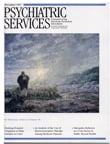Innovative Ideas
Mental health professionals, patients, and family members in southeastern Pennsylvania have developed a way for psychiatric patients living in the community to maintain a convenient record of their medications. The pocket-sized booklet, which is called My Portable Medication Record to distinguish it from official records that remain in the treatment setting, is maintained and carried by the patient.
The booklet lists in chronological order all the medications the person has taken along with each one's track record for symptom reduction, whether the medication was associated with side effects, and how severe those side effects were. Also included in the booklet is information about the interactions between common psychiatric medications and other drugs, foods and beverages, and substances such as caffeine, tobacco, and alcohol.
The portable record is useful when psychiatric patients, especially those with long-term disorders such as schizophrenia, come to a new treatment setting without their medical records. Staff of the new setting can scan the booklet to find out which medications have been tried and with what result.
The portable record also serves as an educational tool that can be incorporated into educational programs for patients and their families. Nurses at two state hospitals in Pennsylvania used the portable record to teach patients who were preparing for discharge now to keep their own medication history and how to rate levels of symptom reduction and side effects. The portable record was also used in teaching patients how to maximize their medications' clinical effectiveness by limiting the intake of foods and other substances that are known to reduce the potency of the medications. (Victoria Conn, M.N., 8430 Germantown Avenue, No. 2F, Philadelphia, Pennsylvania 19118)



